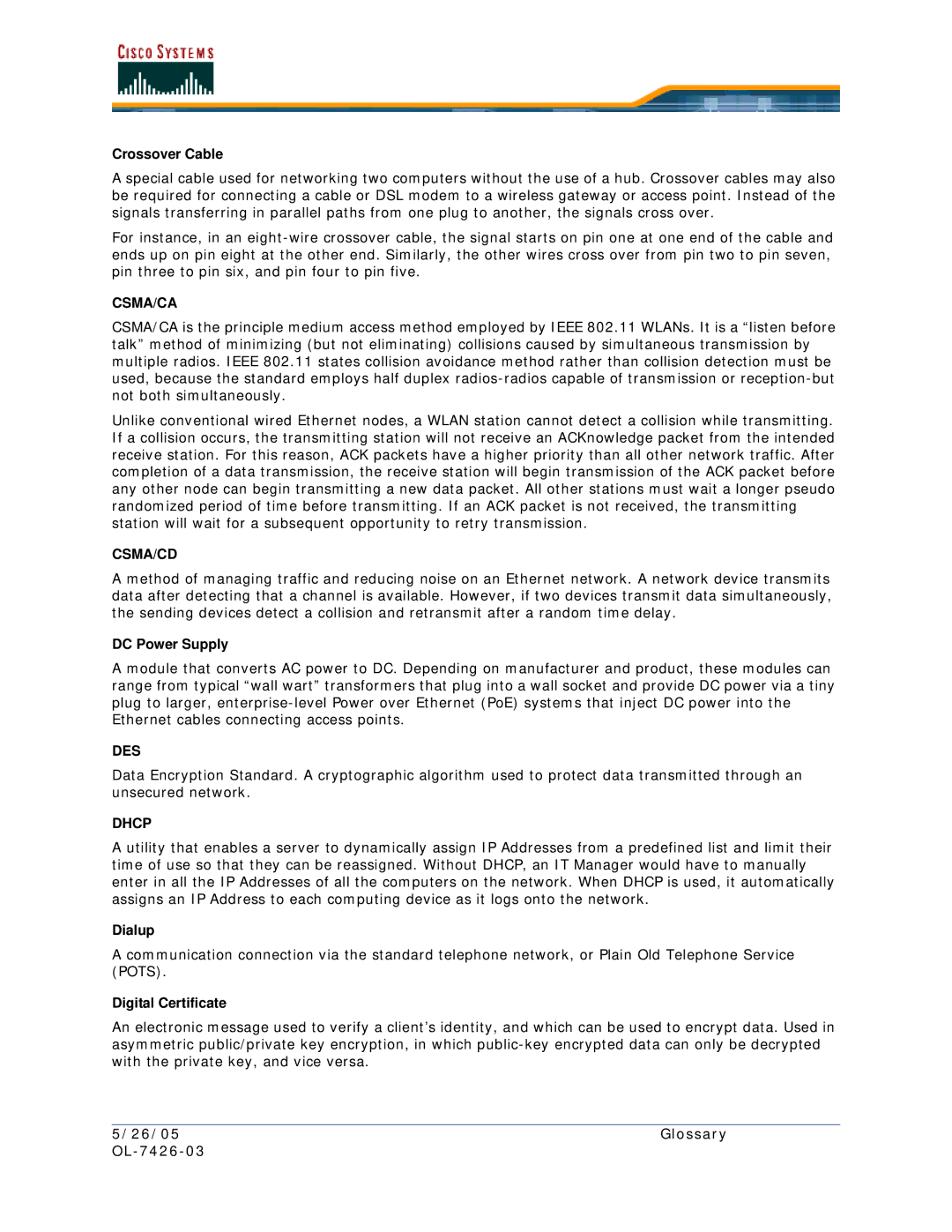
Crossover Cable
A special cable used for networking two computers without the use of a hub. Crossover cables may also be required for connecting a cable or DSL modem to a wireless gateway or access point. Instead of the signals transferring in parallel paths from one plug to another, the signals cross over.
For instance, in an
CSMA/CA
CSMA/CA is the principle medium access method employed by IEEE 802.11 WLANs. It is a “listen before talk” method of minimizing (but not eliminating) collisions caused by simultaneous transmission by multiple radios. IEEE 802.11 states collision avoidance method rather than collision detection must be used, because the standard employs half duplex
Unlike conventional wired Ethernet nodes, a WLAN station cannot detect a collision while transmitting. If a collision occurs, the transmitting station will not receive an ACKnowledge packet from the intended receive station. For this reason, ACK packets have a higher priority than all other network traffic. After completion of a data transmission, the receive station will begin transmission of the ACK packet before any other node can begin transmitting a new data packet. All other stations must wait a longer pseudo randomized period of time before transmitting. If an ACK packet is not received, the transmitting station will wait for a subsequent opportunity to retry transmission.
CSMA/CD
A method of managing traffic and reducing noise on an Ethernet network. A network device transmits data after detecting that a channel is available. However, if two devices transmit data simultaneously, the sending devices detect a collision and retransmit after a random time delay.
DC Power Supply
A module that converts AC power to DC. Depending on manufacturer and product, these modules can range from typical “wall wart” transformers that plug into a wall socket and provide DC power via a tiny plug to larger,
DES
Data Encryption Standard. A cryptographic algorithm used to protect data transmitted through an unsecured network.
DHCP
A utility that enables a server to dynamically assign IP Addresses from a predefined list and limit their time of use so that they can be reassigned. Without DHCP, an IT Manager would have to manually enter in all the IP Addresses of all the computers on the network. When DHCP is used, it automatically assigns an IP Address to each computing device as it logs onto the network.
Dialup
A communication connection via the standard telephone network, or Plain Old Telephone Service (POTS).
Digital Certificate
An electronic message used to verify a client’s identity, and which can be used to encrypt data. Used in asymmetric public/private key encryption, in which
5/26/05 | Glossary |
|
